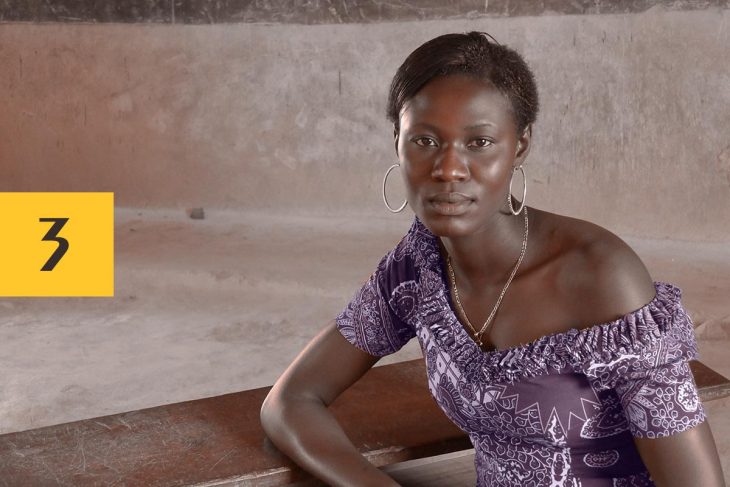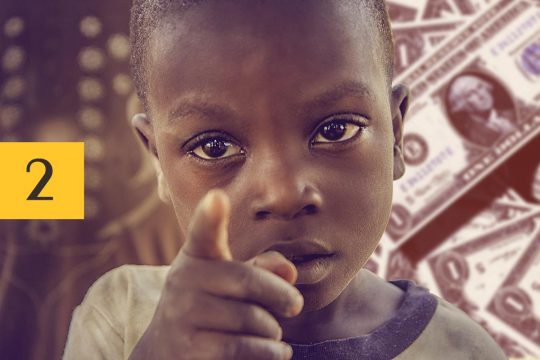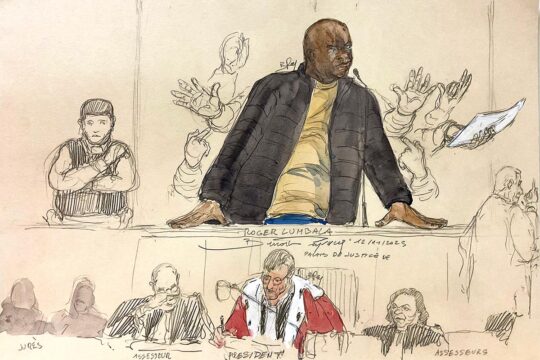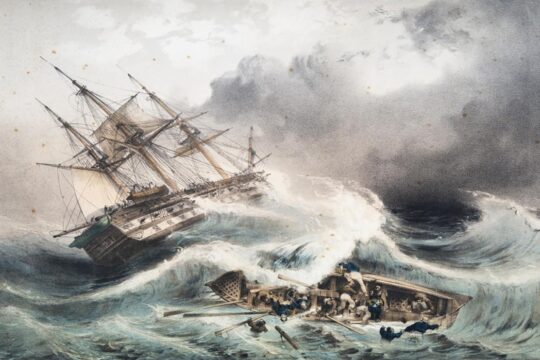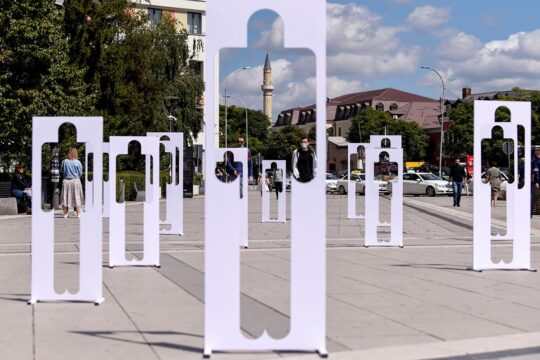I first met Sarah Babona in the schoolroom where her mother was murdered with a machete. I was making a documentary film about the man the International Criminal Court (ICC) accused of planning the massacre in which her parents and most of her family were brutally killed. Softly spoken and shy, Sarah looked straight into the camera and told the militia leader Germain Katanga he had ruined her life. She was just nine years old on February 24, 2003, and has never recovered from what she saw that day in the village of Bogoro.
Bogoro, in the northeastern Democratic Republic of Congo, has been cursed by the vast mineral wealth hidden beneath its black soil. Riches including gold, diamonds, coltan, timber and oil contributed to a bloody conflict from 1999 to 2003 involving local militias, the Congolese government, Rwanda and Uganda. Half a million people were displaced and more than 60,000 were killed.
The war arrived in Bogoro when a Lendu and Ngiti militia led by Katanga attacked a rival Hema militia group based in the school. The villagers were murdered with guns and machetes, including Sarah’s parents and 18 members of her family.
Katanga’s own lawyer described the massacre as a sin before God.
The ICC promise, “a drop in the ocean”
More than two years passed before I saw Sarah again in March 2017. She’d changed, no longer a skinny teenager but a young woman. Her smile was just as bright though. It was the day she had been waiting for since the ICC’s white Land Cruisers had first rolled in to Bogoro many years before, and staff had dangled the prospect of reparations to help the shattered survivors recover some of what they’d lost.
Hundreds of villagers including Sarah’s sister Ruth and her brother Tibasima crowded into a hall in the Ituri regional capital of Bunia to listen to an ICC judge in The Hague, The Netherlands, announce what they’d be getting. In the end it didn’t sound like much: $250 for each of the 297 victims and the promise of housing and education assistance, income-generating activities and psychological rehabilitation.
Listening to the judge, Tibasima Babona remembered his father Mattias, a respected pastor, and his mother Joice. I thought of them too – the wedding photos the family had shared with me for the film and their graves in a peaceful clearing near the village. Mattias was cut down in the hills behind Bogoro as he fled with some of his children and Joice in the school where she’d gone to hide with her young daughters Sarah and Ruth.
Outside, after the ICC had packed up its projector and the underwhelmed villagers digested the news, Tibasima described the reparations as “a drop in the ocean. Something to wipe away the tears of the victims.”
Reparation day in Bogoro (DRC) : disillusion after the ICC's decision
The Germain Katanga trial stands as a concrete example of what reparations may mean at the International Criminal Court (ICC). Filmmaker Lisa Clifford - author of the documentary film Militia Man - was in the village of Bogoro on March 24, 2017 when the ICC announced how it would compensate the Congolese victims of a massacre that took place there in 2003. © Lisa Clifford
Katanga on trial
As with Sarah, my memories of meeting Germain Katanga for the first time, at the ICC’s headquarters in a peaceful, beachside suburb of The Hague, are crystal clear many years later.
I was nervous. I’d never interviewed a warlord before. Katanga was small and smiley, wearing sparkling new trainers, a faux leather jacket which he reluctantly took off as it rustled against the lapel microphone and a gangsta style, gold dollar symbol pendant around his neck. I didn’t expect him to be likeable, but he was, well spoken, thoughtful and seemingly remorseful. As I struggled in French he began speaking fluent English which he’d learned watching television.
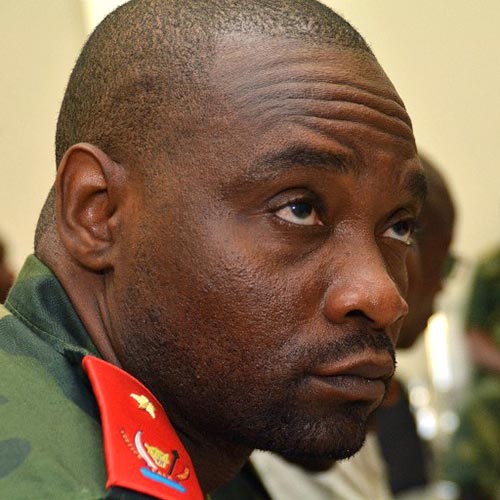
After the excitement of the ICC’s first-ever trial – DRC’s Thomas Lubanga who was on the Hema side in the Ituri conflict – Katanga’s case didn’t generate many headlines after his arrest in 2007. The trial quietly ground on for four years, with few fireworks until five months after it had ended. Then, in an extraordinary and controversial use of the ICC’s untested rule book, the judges presiding over the case decided there wasn’t enough evidence to convict him of the original charges of planning and leading the attack on Bogoro. Instead they resorted to a never-before used article in the ICC’s rule book called Regulation 55 to change the charges months after the trial had ended.
Katanga was found guilty of the new charges of providing the weapons used in Bogoro – less serious than leading the attack – and sentenced to 12 years. He was convicted largely on evidence he’d given to the court himself, admissions he’d made to prove he was an accessory to the crimes rather than the ringleader.
From The Hague to Kinshasa’s prison to peacemaker
Judge Christine van den Wyngaert strongly disagreed with her two fellow judges on the case, saying there wasn’t enough evidence to find Katanga guilty of either the old or the new charges. One law professor I interviewed for my film described it as a “travesty of justice”. It seemed that this new and expensive court which had achieved few tangible results was so desperate for convictions – even slightly tainted ones – it would twist the rules in its favour.
For Katanga things only got worse. He was granted early release from the ICC in 2015 but after arriving home was charged with new (but similar) war crimes by the Congolese government. The ICC approved this prosecution. Four years later there had been no trial. He had no lawyer. And no idea if he’d ever get out of the fetid Makala prison in Kinshasa, DRC’s capital city. Katanga’s brother, father and stepmother had all died while he was in prison. Ituri had descended back into ethnic conflict between the Lendu and Hema. More than one million people had been displaced when Katanga was unexpectedly released from Makala in March 2020 and sent on a peace-making mission to Ituri with several other ex warlords, including Lubanga, another ICC convict. It was an extraordinary development, amid a global pandemic. He’s still there.
Bogoro still in the middle of a war
Today Bogoro stands almost empty. The village is again in the middle of a war zone, caught between the Congolese army and the Force de résistance patriotique de l’Ituri (Patriotic Resistance Force in Ituri, FRPI), the remnants of the militia involved in the attack in 2003. The FRPI are also stealing cattle from the villagers, one of their only sources of income.
Sarah is scared that Bogoro will be again targeted with the same kind of appalling violence. “We are fearing that the whole province of Ituri will be consumed by this conflict and killing will happen again. I was recently hospitalised when I learned that fighting between the government and rebels was going closer to Bogoro.”
Speaking last month, Tibasima said he has stayed in Bogoro to protect his home and land but his wife and two youngest children have fled to a refugee camp in Uganda. “I wonder if I will have to remove the other two children from school and join my wife in Uganda? The situation is terrible. We are still fearing the worst here. The sound of gun shots is frequent.”
Amid this chaos, questions about the impact of the ICC reparations on this threatened and traumatised community seem inappropriate. Simply surviving the latest round of violence is all consuming for the people of Bogoro. ICC reparations can do nothing to repair this kind of damage.
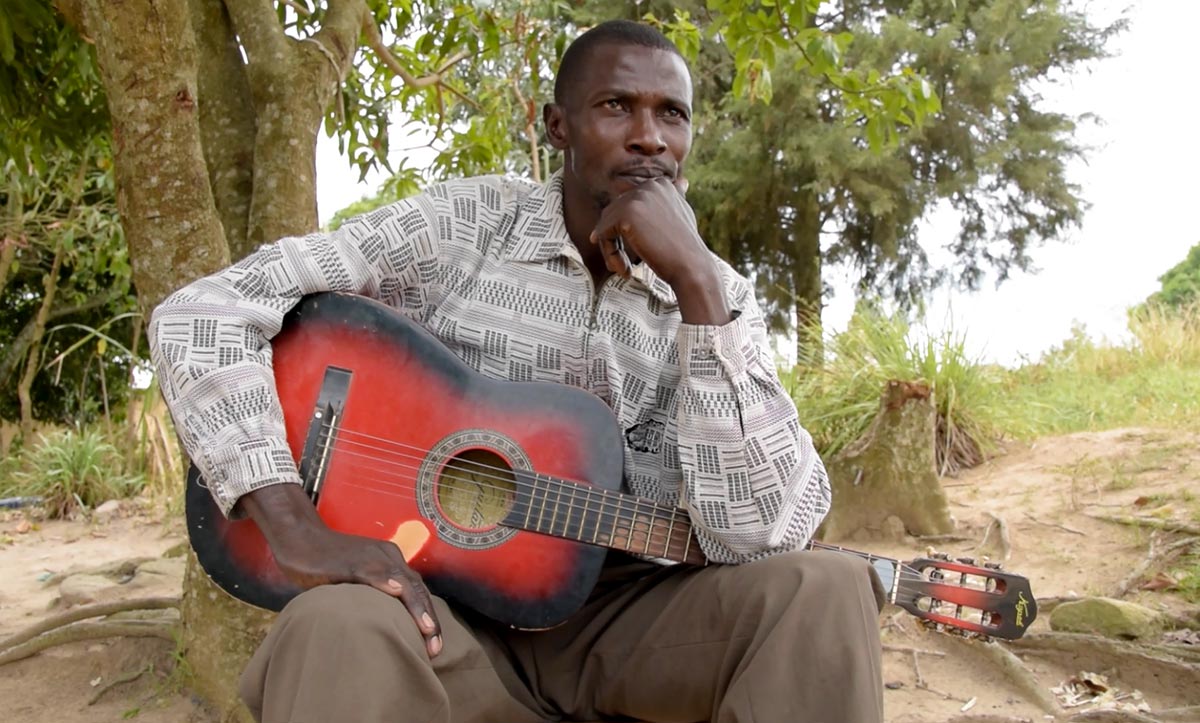
250 dollars, a cow and a veterinarian kit
For the record, the ICC’s Trust Fund for Victims gave Tibasima, Sarah and their sister Ruth $250 each. They also got three cows and veterinarian kits. They didn’t get any school fees for their children, housing support or psychological care. Sarah thought she was entitled to all of this but wasn’t sure who to ask.
The Trust Fund said in a written statement that it had “made significant progress on the delivery of reparations in the Katanga case”. It declined to answer specific questions, citing confidentiality; the lawyers representing the victims didn’t answer emails; Katanga’s defence team say they are no longer involved with the reparations; and the NGOs who usually comment on ICC matters haven’t been following the situation in Bogoro. It’s like the flawed trial and long, complex, messy reparations process were so problematic that they are best forgotten, or at best quietly learned from, then never mentioned again.
Sarah sent me a message through my colleague Horeb Bulmabo who did the interviews for this article. “Our situation seems to fall in an endless cycle,” she wrote. “We ask that you don’t forget Bogoro.”
Lisa Clifford is a UK-based journalist and the director of Militia Man. Horeb Bulambo Shindano contributed to this report.


